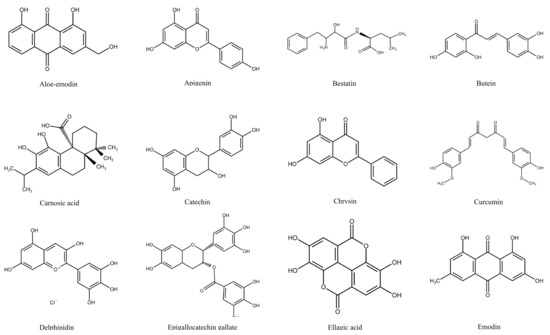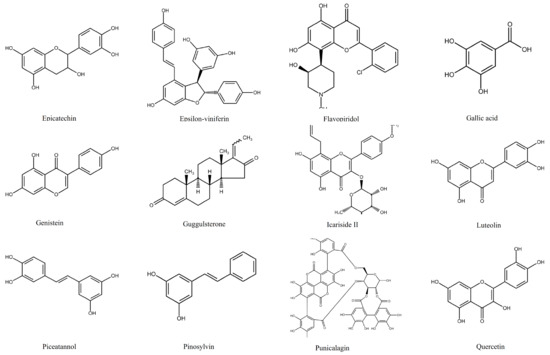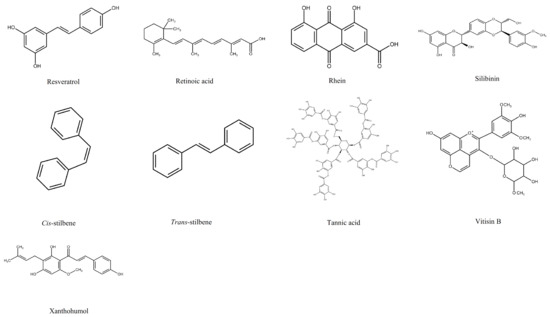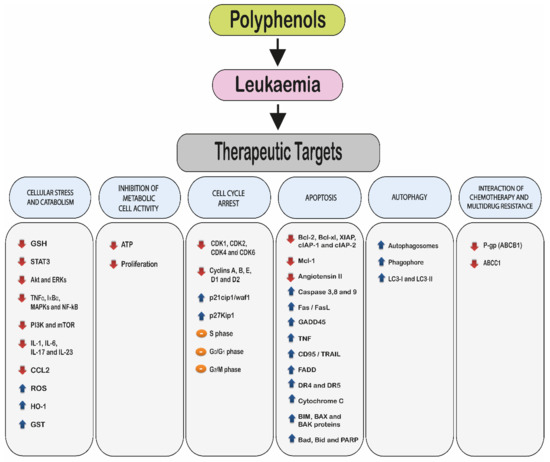1000/1000
Hot
Most Recent

Leukaemia is a malignant disease of the blood. Current treatments for leukaemia are associated with serious side-effects. Here we discuss the potential therapeutic use of polyphenols in leukaemia. We outline the molecular mechanism of action of polyphenol in leukaemia cell lines, and discuss the pharmacological properties of polyphenols, including their anti-inflammatory, antioxidant, anti-proliferative, and anti-tumour activities, and suggest that polyphenols are potent natural agents that can be useful therapeutically; and discuss why data on bioavailability, toxicity and metabolism is essential to evaluate their clinical use.
Polyphenols are a family of phenolic phytochemicals [1] (Figure 1). They are an essential part of the diet, and are found in fruits, vegetables, cereals, nuts, and herbs [2], and drinks such as wine, beer, tea, and coffee [3]. Epidemiological and animal studies have shown potential benefits, with protective effects seen against a wide range of conditions, including cancers such as leukaemia [3][4]. Polyphenols’ anti-cancer activities include halting cell cycle, inducing apoptosis, modulation of angiogenesis pathways, and preventing metastasis [5]. Studies have shown that the consumption of polyphenol-rich foods can prevent 10% to 70% of cancer deaths [4][5]. A major advantage of the use of polyphenols as anti-cancer agents, is that they have low toxicity, and are safe to consume, and highly accessible [6]. This could offer opportunities for innovation in drug discovery [7] and could play a major role in cancer prevention [8]. Moreover, a number of polyphenols (e.g., quercetin, apigenin, rhein, emodin, and resveratrol) have been shown to act synergistically with chemotherapy agents when used as combination treatments in vitro, enhancing cell cycle arrest and inducing apoptosis [9][10][11]. These synergistic effects were shown to be at least partly regulated by a decrease in glutathione levels and an increase in DNA damage, when polyphenols were combined with etoposide; doxorubicin [10][11][12]; cisplatin and 5-fluorouracil in leukaemia cell lines [10][12][13][14].



Figure 1. Chemical structures of all polyphenols discussed within this review. Aloe-emodin [15], Apigenin [16], Bestatin [17], Butein [18], Carnosic acid [19], Catechin [20], Chrysin [21], Curcumin [22], Delphinidin [23], Epigallocatechin gallate [24], Ellagic acid [25], Emodin [26], Epicatechin [27], Epsilon-viniferin [28], Flavopiridol [29], Gallic acid [30], Genistein [31], Guggulsterone [32], Icariside II [33], Luteolin [34], Piceatannol [35], Pinosylvin [36], Punicalagin [37], Quercetin [36], Resveratrol [38], Retinoic acid [39], Rhein [40], Silibinin [41], Cis-Stilbene [42], Trans-Stilbene [36], Tannic acid [43], Vitisin B [44], Xanthohumol [45].
Polyphenols target several molecular pathways leading to cell cycle arrest and induced apoptosis in leukaemia cell lines, while being protective to non-tumour control cells [46][47][48][49] (Figure 2). The key molecular targets of polyphenols include:

Figure 2. Molecular targets of polyphenols in leukaemia. The arrows represent changes in the levels and activities of genes and proteins. The red arrow shows an inhibition or reduction in gene expression and/or protein production, whilst the blue arrow shows an induction or increase gene expression and protein production. The orange sign indicates cell cycle arrest. The figure does not indicate any hierarchy.